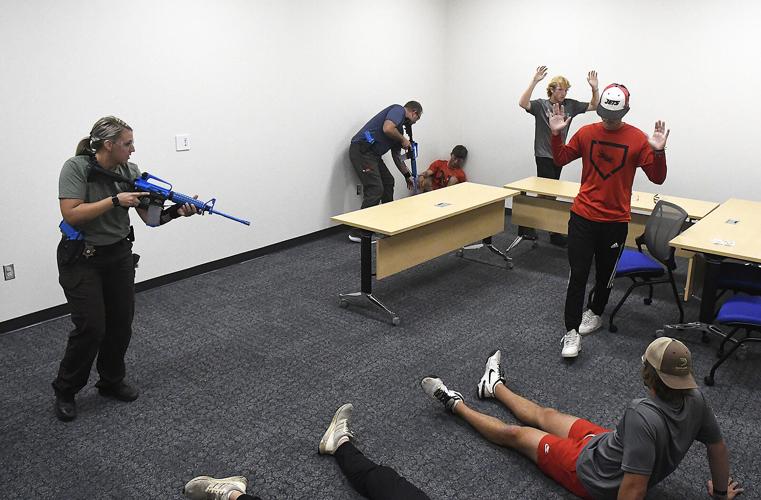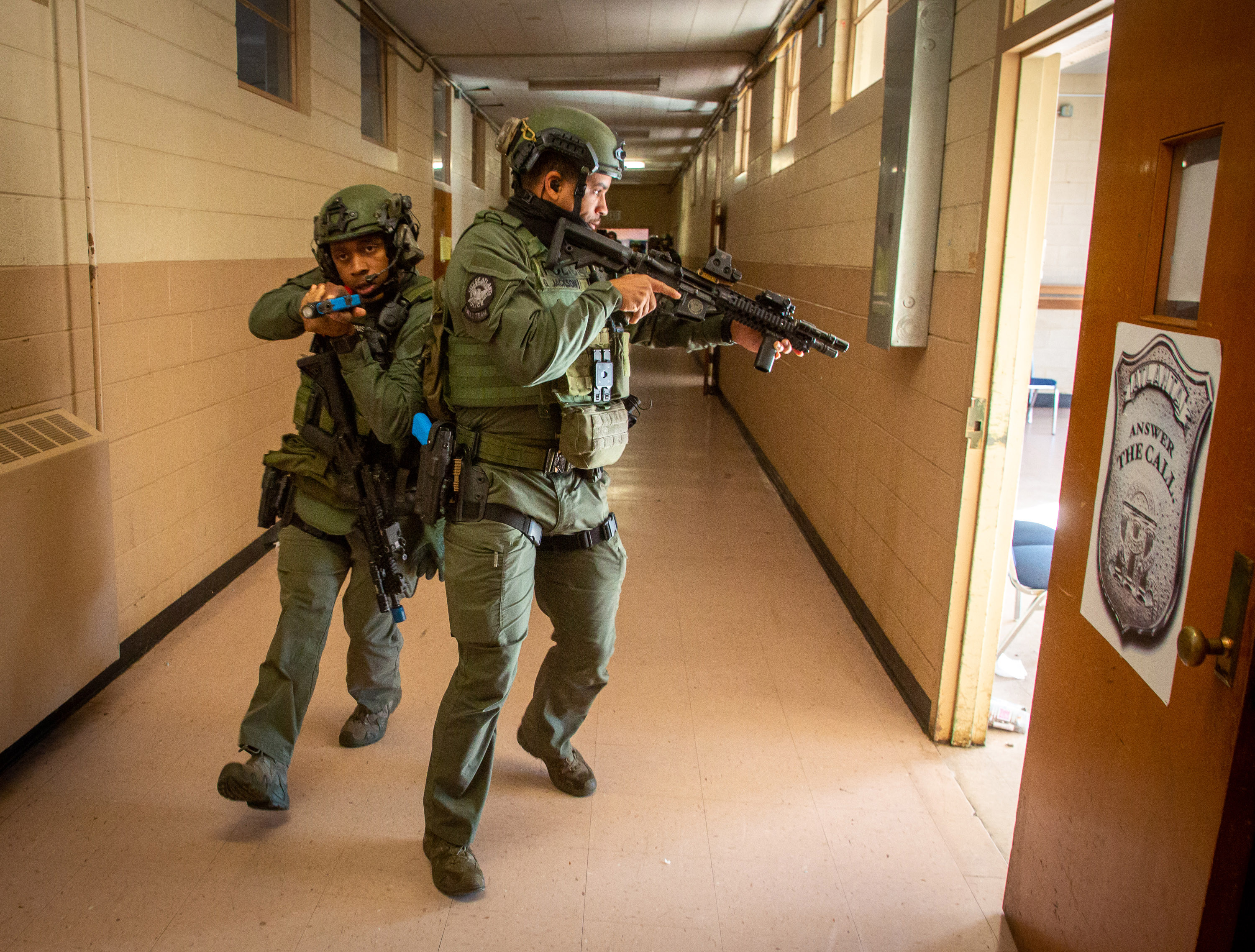The Value of Active Shooter Training in High-Risk Settings
The Value of Active Shooter Training in High-Risk Settings
Blog Article
Executing Active Shooter Training: Finest Practices for Creating a Safe and Prepared Area Setting
As communities face the distressing fact of energetic shooter events, the implementation of comprehensive training programs becomes necessary. An effective strategy depends upon not only the growth of tailored curricula that deal with local dangers but also the involvement of varied stakeholders. By employing a range of training techniques, areas can guarantee that all participants are geared up with vital abilities. Nevertheless, the difficulty lies in maintaining an adaptive framework that develops with emerging dangers. What are the critical elements that can transform a basic training program into a robust model for area durability?

Comprehending the Need for Training
In a period marked by enhancing cases of physical violence in public areas, recognizing the need for active shooter training has actually never ever been a lot more vital. Detailed training initiatives can equip individuals with the understanding and abilities to react decisively.
Training cultivates a feeling of empowerment and preparedness, allowing people to feel even more safe and secure in their surroundings. The benefits of energetic shooter training prolong beyond immediate feedback; they include boosting communication protocols and improving overall safety actions within companies.
Key Elements of Effective Programs
Efficient energetic shooter training programs integrate several crucial parts that boost preparedness and reaction abilities. Comprehensive educational program advancement is necessary, making sure that training web content is relevant, evidence-based, and customized to the particular demands of the organization or neighborhood. This consists of understanding the dynamics of energetic shooter occurrences and the psychological influence on people entailed.
Second, sensible training scenarios need to be used to mimic prospective scenarios, permitting individuals to exercise decision-making and action approaches in a regulated atmosphere. These drills promote muscular tissue memory and construct confidence among participants.
Third, a concentrate on communication protocols is critical. Developing clear lines of communication among police, emergency situation -responders, and participants ensures coordinated responses during an event. Routine updates and correspondence course help maintain communication paths clear and effective.
Fourth, recurring assessment and comments systems ought to be integrated right into the training program - active shooter training. Assessing the effectiveness of training through participant feedback and efficiency metrics enables constant enhancement
Lastly, cultivating a society of security and preparedness within the neighborhood encourages caution and aggressive steps, making sure that people are not just qualified yet additionally engaged in preserving a secure atmosphere.
Engaging Community Stakeholders

To effectively engage these stakeholders, it is crucial to connect the objectives and benefits of the training. Organizing informative sessions can assist clarify the training's purpose, address problems, and outline the roles each stakeholder might play. Creating a stakeholder advising board can help with continuous dialogue, permitting for varied perspectives and insights to be incorporated into the training program.
Building partnerships with community leaders and organizations is likewise critical. Their assistance can enhance outreach efforts, rise involvement, and make sure that training is customized to the one-of-a-kind needs of the neighborhood. In addition, stakeholders can help in disseminating details and resources, strengthening the message of safety and preparedness.
Eventually, engaging neighborhood stakeholders not just reinforces the training campaign yet also cultivates a feeling of ownership amongst homeowners, leading to a more resistant and enlightened neighborhood efficient in responding effectively to prospective risks.
Training Distribution Approaches
Utilizing a variety of training shipment techniques is vital to accommodate the varied knowing designs and demands of individuals in active shooter training programs (active shooter training). Effective training can take a number of types, including talks, hands-on simulations, on the internet modules, and interactive workshops. Each approach serves a distinct function and can boost the general discovering experience

On-line modules provide versatility and availability, making it possible for participants to discover at their own pace. These can include videos, tests, and discussions to assess understanding. Interactive workshops encourage group discussions and analytic, advertising teamwork and communication skills.
Integrating a mixed approach that combines these approaches not only enhances the training experience but additionally ensures that individuals are better prepared to react successfully in case of an energetic shooter circumstance (active shooter training). By attending to various discovering preferences, companies can develop a more educated and receptive community
Constant Analysis and Renovation
Normal evaluation and enhancement of active shooter training programs are critical to top article maintaining their importance and performance. As hazards advance, so have to the methods and methodologies employed in training. Constant evaluation ensures that training content mirrors the most up to date knowledge on active shooter occurrences, incorporating lessons gained from current events and adjusting for arising patterns.
To facilitate this process, companies must establish feedback devices that consist of participant examinations, professional testimonials, and occurrence debriefs. Collecting information on individual performance throughout drills and workouts is essential, as it highlights areas needing renovation and notifies future training sessions. Furthermore, engaging with police and emergency -responders can supply valuable insights into the functionality and applicability of training protocols.
Routinely scheduled evaluations of training products and strategies must be mandated, cultivating an environment of advancement and flexibility. Organizations needs to likewise motivate a culture of ongoing understanding, where personnel feel encouraged to recommend changes based on their experiences. By devoting to continuous analysis and renovation, companies not only improve the performance of their energetic shooter training programs yet additionally strengthen their total commitment to security and preparedness within the community.
Final Thought
Finally, effective execution of active shooter training requires a comprehensive approach that focuses on area engagement and sensible simulations. By developing tailored curricula, including diverse training approaches, and promoting collaboration among stakeholders, communities can improve preparedness. Constant assessment and comments mechanisms are important for adapting programs to emerging threats, thus enhancing general safety and security. Ultimately, a dedication to recurring training and enhancement grows a culture of alertness and preparedness, making sure a safer setting look these up for all area members.
Report this page